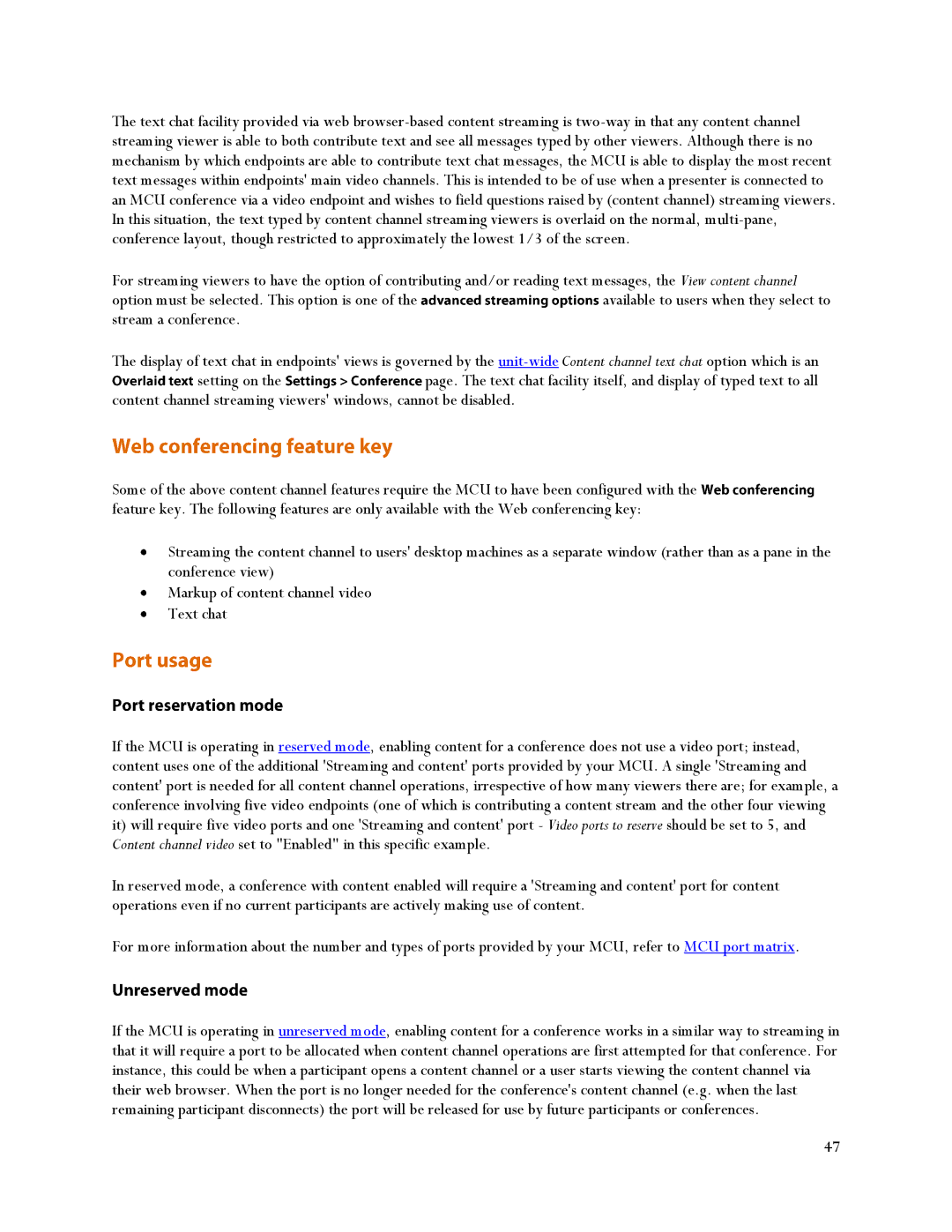
The text chat facility provided via web
For streaming viewers to have the option of contributing and/or reading text messages, the View content channel
option must be selected. This option is one of theavailable to users when they select to stream a conference.
The display of text chat in endpoints' views is governed by the
setting on thepage. The text chat facility itself, and display of typed text to all content channel streaming viewers' windows, cannot be disabled.
Some of the above content channel features require the MCU to have been configured with the ![]() feature key. The following features are only available with the Web conferencing key:
feature key. The following features are only available with the Web conferencing key:
Streaming the content channel to users' desktop machines as a separate window (rather than as a pane in the conference view)
Markup of content channel video Text chat
If the MCU is operating in reserved mode, enabling content for a conference does not use a video port; instead, content uses one of the additional 'Streaming and content' ports provided by your MCU. A single 'Streaming and content' port is needed for all content channel operations, irrespective of how many viewers there are; for example, a conference involving five video endpoints (one of which is contributing a content stream and the other four viewing it) will require five video ports and one 'Streaming and content' port - Video ports to reserve should be set to 5, and Content channel video set to "Enabled" in this specific example.
In reserved mode, a conference with content enabled will require a 'Streaming and content' port for content operations even if no current participants are actively making use of content.
For more information about the number and types of ports provided by your MCU, refer to MCU port matrix.
If the MCU is operating in unreserved mode, enabling content for a conference works in a similar way to streaming in that it will require a port to be allocated when content channel operations are first attempted for that conference. For instance, this could be when a participant opens a content channel or a user starts viewing the content channel via their web browser. When the port is no longer needed for the conference's content channel (e.g. when the last remaining participant disconnects) the port will be released for use by future participants or conferences.
47
